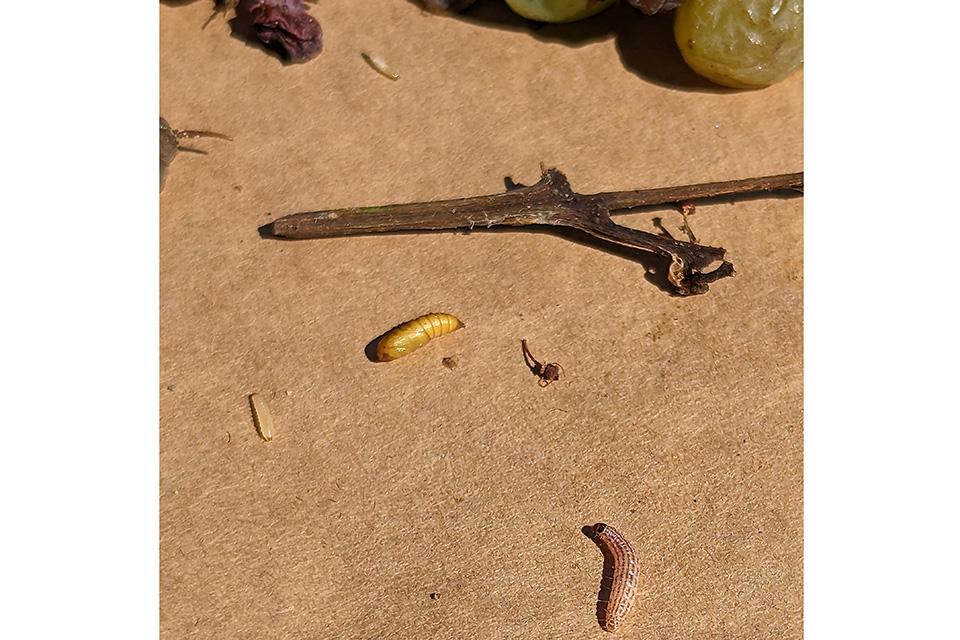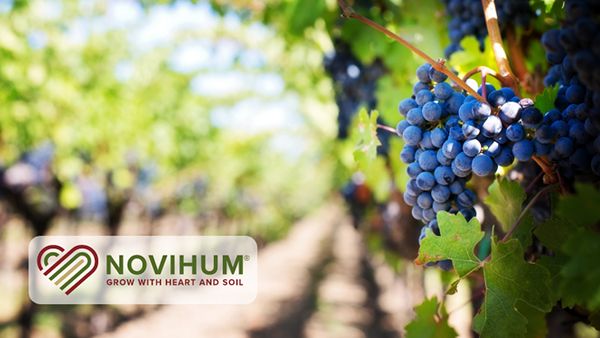Reasons 2023 Was a Year of Extremes for Grape Growers
When grape growers in the San Joaquin Valley reflect on the 2023 season, pest and disease control will probably be top of mind. The growing season followed a winter with abundant precipitation, which was gratefully received after years of drought. However, growers began to become concerned as storms lingered into the growing season, delaying bud break.
April was dry, but with many cool, cloudy, and humid days, which inhibited vine development. A warm spell in late April was followed by cool, rainy weather in early May. Mid-May saw a few weeks of normal temperatures, only to be followed by another unusually cool and humid period that lasted through the first half of June. High soil moisture and mild, humid days contributed to exceptional powdery mildew pressure in late May and early June. Spring weeds were also a problem in many vineyards, and uncontrolled weeds further contributed to a vineyard environment that favored pests and diseases.
CULTURAL PRACTICES WERE KEY
Because of the challenging growing conditions in late spring and early summer, timely and thoughtful implementation of key cultural practices, including irrigation, canopy management, and pesticide applications, were needed to avoid serious problems. Canopy management practices, such as leafing, hedging, and skirting, helped improve ventilation, increase light penetration, and improve pesticide penetration into the canopy and coverage of fruit.
Judicious irrigation helped sustain the canopy and fruit without promoting excess growth and humidity. Successful fungicide programs followed a strategy based on reducing early season inoculum and subsequent infections. Such a program requires selecting the right materials for the time of year and disease pressure, alternating active ingredient FRAC groups, and shortening the spray intervals during periods of high pressure.
DISEASE PRESSURE
Unfortunately, certain grape varieties are particularly sensitive to powdery mildew, and even well-executed powdery mildew programs provided inadequate control in some vineyards with sensitive varieties. On the other hand, the threat posed by the intense powdery mildew pressure in May and June seemed to be overlooked by some growers, perhaps lulled into a false sense of security following many previous seasons of hot, dry weather, which helped control powdery mildew.
Regardless of the cause, reports of severe powdery mildew infections began to circulate by early June. Severe powdery mildew infections directly reduce grape quality and yield, and even moderate infections can damage berries, thereby increasing the risk of bunch rots.
July was hot and dry, but locally heavy rain returned to the San Joaquin Valley on August 21, in the form of a rare post-tropical cyclone. This storm dropped unprecedented rainfall across the Southern San Joaquin Valley, with devastating impacts on grape growers.
After the cyclone dissipated, weather remained cooler and more humid than normal, and smaller, but locally significant thunderstorms affected some growers who escaped the primary storm. The cyclone and associated storms were the final straw for grape growers with sensitive varieties or who may have had preexisting pest and disease issues. Widespread losses were soon reported. In the worst case, cracking and rot was so severe that entire vineyards were left unpicked. In other cases, harvest efficiency was reduced by the time needed to ascertain the potential viability of clusters, and trim out unwholesome berries.

Raisin moth larva and pupa observed on a raisin tray in the San Joaquin Valley.
Photo by University of California/Matthew Fidelibus
INSECT PRESSURE
The environmental conditions and microbial diseases, independently and together, contributed to unusually severe insect damage in some vineyards. Many growers observed early and repeated katydid damage, and harvest inspections have revealed serious infestations of raisin moth and omnivorous leafroller (OLR). Feeding damage by any of those insects can lead to bunch rots. If katydid damage was observed this year, growers should look for nymphs early next season and treat, if warranted.
Raisin moths are attracted to rotting fruit, which was widely available this year, and their feeding leads to further rot. Monitoring and control guidelines for OLR are available at https://ipm.ucanr.edu/agriculture/grape/omnivorous-leafroller.
We may never have another year quite like 2023, but extreme weather is to be expected with climate change. This heightens the need for growers and pest control advisors to adapt to changing conditions and refrain from relying on traditional “recipes.” Knowledge of pest biology and ecology will be needed to anticipate how unique weather conditions may affect pest control strategies.










